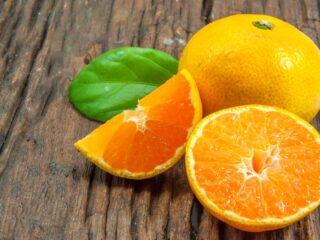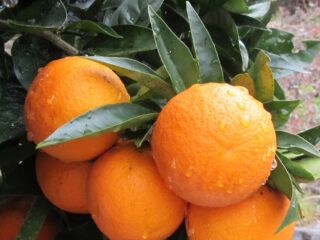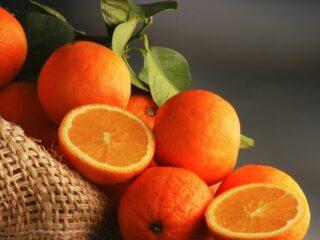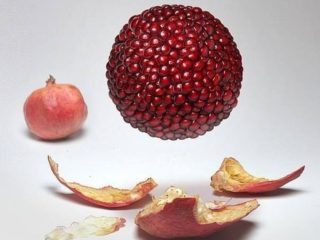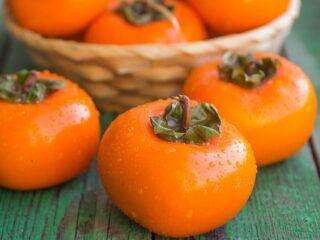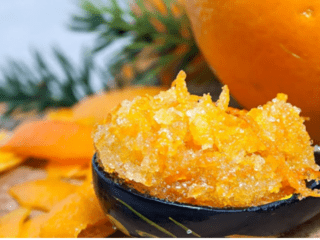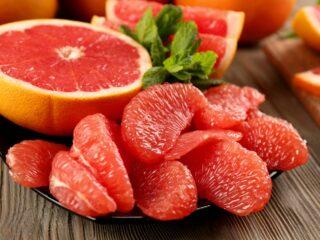Content
Knowing about the healing properties of citrus fruits and their ability to replenish mineral and vitamin deficiencies, young parents are at a loss when it is possible to give an orange to their child. Since the tropical fruit is an allergen and has a number of restrictions, it is necessary to follow generally accepted rules for its introduction into the diet of children under one year of age.
Benefits for children
Even the smell of citrus fruits has a beneficial effect on the body. Essential oils reduce anxiety and improve your mood.
Beneficial properties of orange:
- Freshly squeezed juice strengthens bone tissue and helps retain calcium in the child’s body.
- Tropical fruits increase appetite, prevent constipation, and eliminate indigestion.
- Orange juice contains pectins, and the pulp is rich in fiber. These substances remove harmful compounds and toxins from the body and improve appetite.
- Systematic consumption of oranges regulates the functioning of the heart and liver and improves immunity.
- Fresh orange berries contain significantly higher percentages of magnesium and potassium than other fruits.In addition, the chemical composition of the product includes aminocarboxylic acids, minerals, vitamins (biotin, groups B and E), ascorbic acid. Also monosaccharides, phytoncides, sucrose and fructose.
Tropical fruits help reduce inflammation and cleanse the blood.
From what months can you give an orange to a baby?
Before introducing orange into complementary foods for children (not earlier than the baby is three months old), the mother needs to eat 1-2 slices of the tropical fruit. After feeding, the baby's reaction is observed for at least five hours. If there are no colics or allergies, a woman can periodically (no more than every 3-4 days) eat ½ of the fruit.
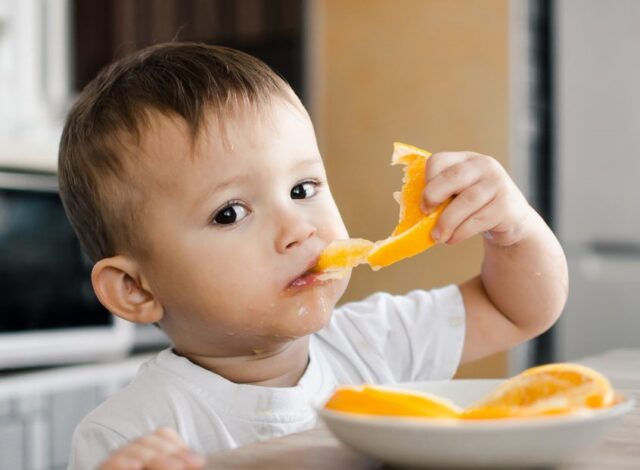
You can give your baby an orange when he reaches 10 months.
At 9-10 months the child is allowed to eat fruit on his own. Start with ½ slice, cleared of film and seeds. The treat is offered to the baby in the morning to observe how the body reacts to the product throughout the day. If everything went well, after a few days the portion is increased to one slice. For a one-year-old child, you can add a few drops of freshly squeezed orange juice to compote or not hot tea. Always monitor the baby's condition.
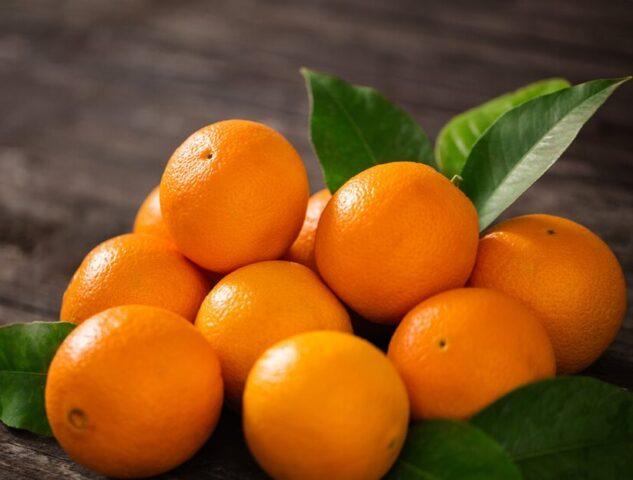
A child aged 5-6 years is allowed to eat the whole fruit, every other day.
Rules for introducing into the diet
How to introduce orange into your baby's diet:
- The product is introduced with a few drops of freshly squeezed juice. If an allergy to the fruit does not manifest itself, the dosage is increased by a few drops each time.
- At first, the interval between consumption of citrus fruits should be 3-4 days.
- It is not recommended to give your child packaged juices.They contain carcinogens and other components that are of no benefit to the body.
It is strictly forbidden to introduce oranges into a child’s diet along with other citrus fruits. If you are intolerant to one of them, it will not be easy to identify the allergen.
Why do allergies happen?
The cause of the allergy is the body's reaction to the active substances contained in the tropical fruit. In particular, amines, salicylates and benzoates cause rashes. If the concentration is exceeded, they can cause allergies even with normal functioning of the immune system.
Harm and contraindications
Despite the many healing qualities, oranges can cause harm to a child’s body. It is dangerous for high acidity of gastric juice and gastrointestinal diseases.
When orange is contraindicated:
- individual intolerance;
- inflammatory processes in the lining of the gastrointestinal tract;
- diseases of the endocrine system.
Children under 6 years of age should not be given orange zest. A large number of harmful components accumulate in it.
In what form to give
Orange is a multifunctional fruit. It is consumed fresh (given to children without peels, films and seeds), and used to decorate and complement dishes.
Orange juice
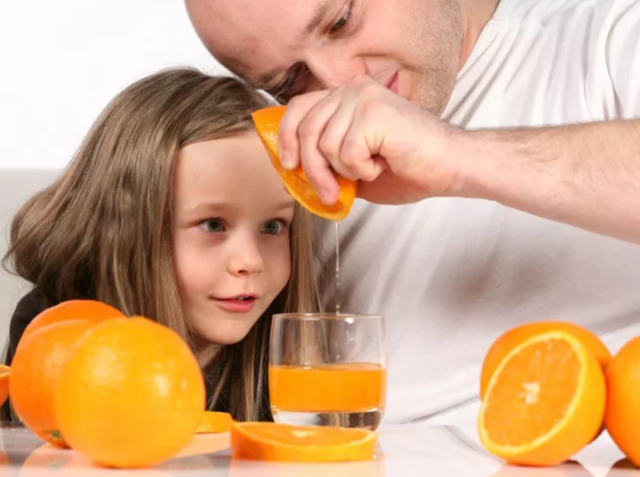
Unlike packaged juices, freshly squeezed juices contain live organic acids and vitamins
Children begin to be given juice with a few drops (3-5 ml). To soften the taste, it is recommended to dilute it with water in a 1:1 ratio. If there is no reaction to orange, you should still not exceed the norm, no matter how much the child likes the product.It has the property of irritating the gastric mucosa. Up to six years, a single serving should not exceed 30-50 ml; from 7-10 years, the volume is increased to 70-100 ml.
Orange nectar can be combined with other juices. For example, apple or carrot.
Orange dessert

Children over one year old are allowed to include desserts with the addition of orange in their diet.
Ingredients:
- two citrus fruits and two medium-sized carrots;
- 150-200 g sour cream;
- 50 g raisins.
How to cook:
- The orange is washed, peeled, white film and seeds removed. Disassembled into fibers.
- Carrots are washed, peeled and grated.
- Mix the orange and carrots and add the remaining ingredients.
The dessert is thoroughly mixed. If necessary, add a little sugar and sprinkle with lemon juice.
Candied fruit

Children who have weight problems or are diagnosed with diabetes should not include candied fruits in their diet.
Recipe:
- Wash oranges with a sponge. To remove bitterness from the skin, place the fruit in a saucepan and pour boiling water over it.
- The berries are pressed down from above with pressure so that they do not rise to the surface, but are completely in the water.
- After 10-15 minutes, take out the product, dry it with a towel or wipe it dry with a paper napkin.
- The fruit is cut into rings 0.5 cm thick and placed in a pan.
- A syrup is prepared from 1 kg of sugar and 250 ml of water. After it boils, pour it into the pan with the orange rings and leave for 10-12 hours.
- After the specified time, the syrup is drained, brought to a boil, and poured into a container with candied fruits.
- The manipulations are repeated until the crust becomes translucent. Then the pan along with candied fruits and syrup is placed on the stove. After boiling, boil over low heat for 5-7 minutes.
- Place the candied fruits in a colander and set aside until the syrup has completely drained from them.
Place the dried candied fruits on a baking sheet covered with parchment paper. The tray is placed in an oven preheated to 80ᵒC, the door is not closed.
Rules for choosing an orange
Factors to consider when choosing an orange for a child:
- The small size of the fruit ensures that the pulp is sweet.
- Fruits with navel-shaped structures are ideal for introducing citrus fruits to kids. These berries have no seeds, they are juicy and sweet.
- The relationship between weight and size of the fetus. A ripe fruit weighs more than an unripe specimen of the same size.
- Ripe citruses emit a persistent aroma.
The thickness of the skin does not affect the sweetness of the berry. Also, you should not judge the unripeness of a fruit by its color. Fruits with a bright orange color ripened in the sun, while paler fruits ripened in the shade.
Conclusion
To prevent health problems, when introducing orange to a child's complementary foods, it is necessary to choose a high-quality product and not violate the dosage. If an allergic reaction occurs, consult your family doctor.
